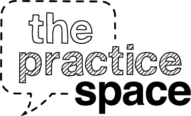RESOURCE 14
Activity Examples: Facing the Fear Podcasts and StorySlams
Becoming a strong public speaker requires courage, vulnerability, and self-awareness, which students can build through regular reflection on their past performances. These assignments highlight reflection skills by asking students to look back on their journey as a public speaker and honestly communicate their new strengths and what still rattles them. These presentations will also depict the class journey of developing strong public speaking skills, helping students develop empathy and feel like they aren’t alone in their fears.
What is the purpose of these assignments?
- Students reflect on their journey as public speakers and work in teams to tell true stories about their process of developing communication skills, either through a podcast or a class story slam.
- In a shorter form, these assignments can serve as a fun reflective activity after a major presentation assignment. The longer version of these assignments can serve as a reflective “part 2” of their presentation grade.
How do these assignments connect to Common Core Speaking & Listening Standards?
- Regardless of grade level, the anchor standards for “Presentation of Knowledge and Ideas” require students of all ages to make strategic use of digital media (CCSS.ELA-LITERACY.CCRA.SL.5).
- Starting in Grade 1, the anchor standards for “Presentation of Knowledge and Ideas” require students to be able to express their ideas and feelings clearly (CCSS.ELA-LITERACY.SL.1.4).
- Starting in Grade 2, the anchor standards for “Presentation of Knowledge and Ideas” require students to be able to tell a story or recount an experience with appropriate facts and relevant, descriptive details (CCSS.ELA-LITERACY.SL.2.4).
- Starting in Grade 4, students need to be able to add audio recordings to presentations when appropriate to enhance the development of main ideas or themes (CCSS.ELA-LITERACY.SL.4.5).
- Starting in Grade 8, students need to engage effectively in a range of collaborative discussions, building on other’s ideas and expressing their own clearly (CCSS.ELA-LITERACY.SL.8.1).
- In Grades 11 and 12, students need to integrate multiple sources of information presented in diverse formats and media as well as present a clear and distinct perspective appropriate to purpose, audience, and a range of formal and informal tasks (CCSS.ELA-LITERACY.SL.11-12.2 and CCSS.ELA-LITERACY.SL.11-12.4).
What do students need to prepare?
For both assignments, students must understand the basics of how to tell an engaging detailed story and need previous experience telling stories in class. The classroom culture also needs to be safe and supportive enough to invite reflection and vulnerability without fear of ridicule.
Facing the Fear Podcast
In small groups of 3, students work together to create a podcast episode on a focus of their choice related to themes such as “equity”, “public speaking”, “fear”, “awkwardness”, “making mistakes”, “self-improvement”, “speaking up”, “silenced”. The teacher can provide them with a bank of possible theme choices or the class can generate topics. To give students freedom as well as focus, themes should be short (1 word or a phrase) and open-ended. Students can create a podcast that showcases personal stories (e.g. Moth-style), interviews (e.g. news style), free-form discussion, or even a fictional mystery/story based on a true story. Regardless of student choice, groups should make sure that their podcast is based in their truth. This assignment can be a portion of the overall presentation grade or even its own graded assignment (see rubric).
Short version (ungraded activity): Instead of in groups, students can work individually to audio record their 2-3 minute reflections on their presentations, like an audio journal. Student volunteers can then edit excerpts from the class reflections into one podcast about the class journey.
Students need:
- Examples: Students need previous experience listening to a few different examples of podcasts (Moth, Serial, or This American Life can be good places to start for this type of assignment).
- Ability to record their audio: Students can record their podcasts on their phones and upload them to a class Google folder. For a lower tech version, each group can also use a few cheap audio recorders.
- Music: Students should also select music that fits the tone of their podcast and should make sure they only choose from royalty-free, open source music (see websites such as www.bensound.com).
- Ability to edit their podcast: To edit the podcasts, reference how-to blogs on “how to edit a podcast” and download free audio editing software (such as Studio One, Audacity, Garage Band, or Twisted Wave). It depends on the class whether students should just focus their time on constructing stories and recording them (and leaving the editing task to volunteer students or the teacher). To make editing easier, students should be encouraged to record their stories in one take and the teacher should emphasize that the best podcasts have an authentic feel that can include mistakes.
- Submission System: The process of putting together a podcast is a lot easier if students have a system for naming files, uploading them to a group folder, etc.
Facing the Fear Story Slam
On a class day following a major presentation, students work together in small groups as part of a storytelling contest. With each round, students receive a theme to focus their stories and then have ten minutes to prepare their team presentation. Each group has 5 minutes of total presentation time to tell personal stories related to the theme. While everyone needs to speak, students can decide how to connect their stories to one another and how their stories can provide diverse perspectives on the theme. Each round focuses on a different theme and can include abstract concepts like, “courage”, “pushing your limits”, “awkwardness”, issue-oriented topics like “prejudice” or “youth voice”, or topics that provide a single sentence starter like “you would never believe this, but I…..” Students perform in two to three rounds of stories, which are judged on a point system by the teacher or a panel of outside visitors (see point system).
Short version (ungraded activity): On a class day following a major presentation, students can sit together in small “storytelling circles” and tell personal stories related to themes that touch on the fear of public speaking or on areas they feel like they’ve improved about their speaking.
Students need:
- Spontaneous Speaking Experience: Students need previous experience with preparing talking points in a limited time frame (i.e. not scripting out a speech but instead coming up with ideas on the spot).
- Point System: Students also need to be clear about the point system for the story slam.
- Fun Environment: It also helps to make a show out of it, putting comfy chairs or stools at the front of the room and having a few students act as hosts or emcees. It is recommended for the teacher or outside visitors to act as judges, instead of students, so they can focus on their stories and not get overly competitive.


